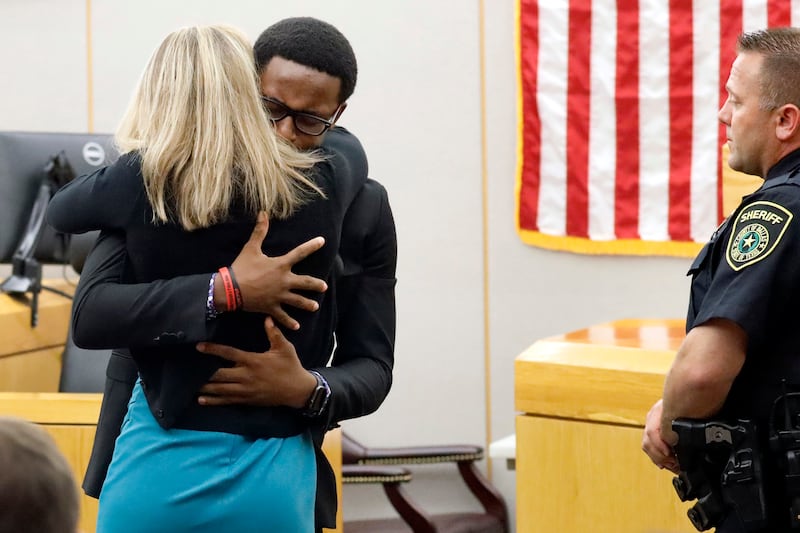Brandt Jean is exactly what the United States needs right now.
At a time when anger, cynicism and resentment are widely seen as necessary credentials for admission to the public square; when blind political partisanship and victimhood rage over the air and on social media, he reacted to unthinkable hurt with forgiveness.
As difficult as it may be for many to begin to understand how someone could forgive the senseless killing of a brother, he clearly recognized it as the only way to liberate himself from the chains of hatred and a debilitating desire for revenge.
Jean is the brother of Botham Jean, a 26-year-old accountant who was killed in 2018 by Dallas police officer Amber Guyger, who entered his apartment at the end of her shift, thinking it was her own. She shot Botham Jean twice while he ate ice cream.
The case raised passions in Dallas and the rest of the nation, for more than one reason. Botham Jean was black. The now former Dallas police officer, Guyger, is white. Prosecutors said Guyger did little to help Botham after she shot him, other than call 911. They also presented racist text messages Guyger had authored.
A jury sentenced Guyger to 10 years in prison on Wednesday, which immediately sparked protests from angry people who felt that was too light.
All of which makes what Brandt Jean did in the courtroom so remarkable.
“I forgive you,” he told Guyger, “and I know if you go to God and ask him, he will forgive you.”
He made it clear he was speaking only for himself, not the family. “... but I love you just like anyone else.”
Others in courtrooms have offered similar sentiments. But he went two steps further. He said he didn’t even want her to go to jail, an authentic expression that spoke to his sincerity. He then asked the judge for permission to hug Guyger. They ran toward one another, embraced and cried.
For about 30 years now, researchers have studied the effects of forgiveness, confirming again and again that it elevates a person’s mood, leads to greater optimism, lowers blood pressure and has positive effects on the brain. Not forgiving, on the other hand, can enhance depression and anxiety, leading to feelings of anger and hostility.
“When you don’t forgive you release all the chemicals of the stress response,” Dr. Frederic Luskin, co-founder of the Stanford Forgiveness Project, was quoted as saying recently on Salon.com. “When it’s a chronic grudge, you could think about it 20 times a day, and those chemicals limit creativity, they limit problem-solving.”
In other words, those who refuse to forgive willingly allow their assailants to hurt them again and again.
The world has seen many examples of forgiveness in action, from the Long Island woman who, 14 years ago, forgave the young man who nearly killed her by tossing a frozen turkey through her windshield as she drove down the highway, to South Africa’s post-apartheid Truth and Reconciliation Commission. In the first example, the victim and assailant came together and eventually went on speaking tours together, teaching others to forgive. In the second, an entire nation avoided the vengeful violence that might have engulfed a country filled with grievances.
Now the world has another powerful example.
Brandt Jean clearly didn’t put conditions on his gift of forgiveness, and his action put him in a position of strength.
Critics may argue that Guyger had done little to warrant forgiveness, despite her apologies to the court. But Brandt Jean clearly didn’t put conditions on his gift of forgiveness, and his action put him in a position of strength.
Justice needed to be served, and a prison sentence is part of that. But forgiveness was a gift he gave to Guyger and, most importantly, to himself. And it was that — not the sentence — that captured the attention of the nation.
Imagine, just for a moment, how different the country would be if everyone adopted that spirit.

